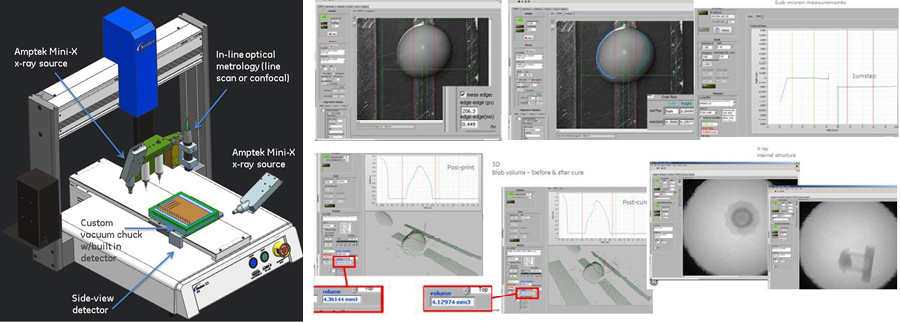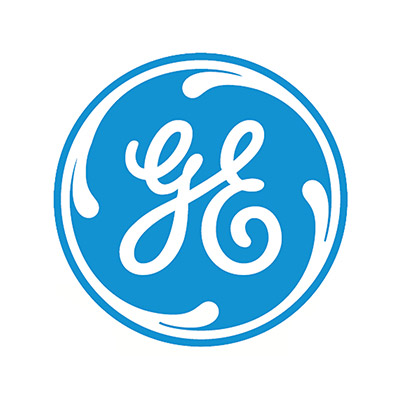


Multi-modal direct write inspection consisting of in-line optical metrology and on-line side-and-bottom-view x-ray inspection provides trace thickness/widths/volume, overflow of DW deposits, and internal voids.
Development and validation of physics-based thermal distortion prediction and compensation methods to mitigate distortion in build geometries when using metal powder-bed additive manufacturing processes.
Problem
The patterned deposition of materials has evolved from single-function image transfer to multi-material fabrication of functional structures and electronic devices. A lack of robust process monitoring for defects in the printed structures and devices, however, has hindered the industrialization of this direct write (DW) technology. Without in-situ monitoring, defects within the printed functional structures and electronic devices during a multiquantity build array of parts are not detected until the post process inspection of the prints. This can lead to a low yield of acceptable parts thus decreasing productivity and increasing costs.
Objective
The main objective of this project was the development of an in-line inspection system for the DW process to reduce time and cost and add unique capabilities for novel design applications and robust fabrication. A second objective was to explore multiple nondestructive inspection modalities to enable the identification and quantification of 3D topological defects in printed materials as well as any structural variation that can lead to functional defects in the final printed part.The main objective of this project was the development of an in-line inspection system for the DW process to reduce time and cost and add unique capabilities for novel design applications and robust fabrication. A second objective was to explore multiple nondestructive inspection modalities to enable the identification and quantification of 3D topological defects in printed materials as well as any structural variation that can lead to functional defects in the final printed part.
Technical Approach
The technical approach leveraged General Electric’s (GE) experience in additive manufacturing and inspection technologies to develop the appropriate in-situ inspection system to monitor the DW process from fluid deposition to final cure and potentially sinter. Specifically GE evaluated, down-selected, and developed: 3D measurement of printed structures using optical metrology technology (structured light, confocal, focus diversity, etc.) that has made significant advances for in-process applications; and nondestructive inspection of the internal structure variations of printed materials using technologies such as transient thermography and digital x-ray. Functional properties such as electrical conductivity were also addressed.
Accomplishments
The program developed a fully integrated inspection system built around a Nordson Pro4L direct write automated dispensing machine which included:
- Optical and x-ray inspection integrated with Pro4L direct deposition printer for in-situ inspection
- Independent dual-axis single-micron motion system for positioning all optical inspection components and x-ray sources
- 10mm blue-light laser triangulation scanner for 10µm 3D shape inspection along with integrated software to measure pre- and post-deposition volumes
- 1mm point-scanning chromatic confocal system to measure thin film geometry printed on transparent substrates and thicknesses down to 0.3µm
- Dual perspective 90kV X-ray sources along with 20µm and 100µm x-ray detectors for internal structure inspection
- Machine vision camera with customizable Labview Vision software for in-situ metrology of print geometry defects
- Lead-based x-ray enclosure that houses the entire system for autonomous and safe operation
The system provides in-line optical metrology inspection and on-line x-ray inspection for structural inspection. The x-ray safe enclosure protects operators from x-ray exposure. The inspection system is capable of inspecting trace widths, determining overflow of DW deposits over traces, measuring trace thickness, measuring trace volume before and after cure, and detecting internal voids of filled cylinders. The hardware and software capabilities demonstrated at ARDEC were deemed sufficient to meet the inspection objectives defined. A software training guide for the inspection system was also developed.
Project Participants
Project Principal

Other Project Participants
- RDECOM-ARDEC (Picatinny Arsenal)
